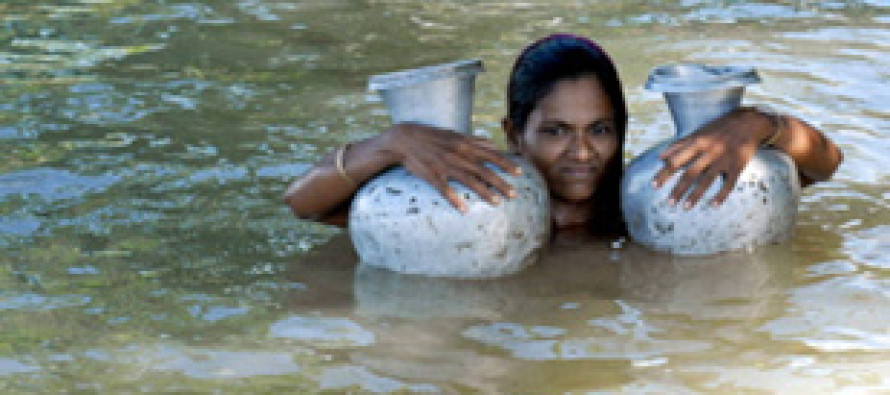Copenhagen Conference on Climate Change Bangladesh

The UN Conference on Climate Change has commenced in Copenhagen for two weeks from 7th December 2009.
About 18,000 delegates are participating in the conference. It is one of the largest conferences held by the UN. Emotions ran high among young people who are already present in Copenhagen for successful outcome of the conference attended by 192 states and representatives of civil society and NGOs.
Objectives of the Conference:
• To replace the 1997 Kyoto Protocol which expires in 2012
• Legally binding reduction of greenhouse gas emissions
• Adaptation & Mitigation Funds for vulnerable countries
• Monitoring mechanism for implementation
Why urgency?
It is reported that the standing stock of greenhouse gas in the atmosphere is around 200 gigatonnes (a gigatonne being a billion tonnes) since the beginning of the Industrial Revolution.
Furthermore global warming has started melting away the glaciers and icepacks in the both the polar regions and as a result, the sea level will rise and many areas of low-lying countries will be submerged, leading to environmental refugees.
It is evident that current way of living and using fossil fuel cannot go on in affluent countries. It has to be stopped.
Oxfam estimates that at least $50 billion dollars will be needed per year if poor countries are to cope with global warming. It has called on the European Union to provide about 30% per cent of that sum in order to reflect both its wealth and its share of global toxic emissions.
Bangladesh:
Given the physical characteristics of Bangladesh, it is extremely vulnerable to global climate change and the total environment of soil, air and water have now degraded so much that the country is in danger of being a text book example of what global climate change could bring adverse impact on a country.
A recent report of UK Department for International Development (DFID) of 2007 presents a bleak picture of Bangladesh by 2030.
The Report predicts that the population will be nearly 200 million by 2020, with 40% under the age of 15 years of age. An additional 6-8% of Bangladesh will be permanently under water and flood-prone areas will increase (from 25% to 40% by 2050).
Furthermore three quarters of the Himalayan glaciers may have vanished with disastrous consequences for areas dependent on the Ganges and Brahmaputra rivers.
It is noted with great concern snow in the Himalayas has been melting in an unprecedented manner. It is reported that the “ Khumbu glacier” of the Mount Everest has retreated by 5 kilometres down the slope of the Everest because of global warming.
Recently the Cabinet Ministers met near the base of Mount Everest to show to the world community that if the existing rate of green house gas emissions continues, the snow will disappear eventually from the Himalayas.
Bangladesh’s rivers are snow and rain-fed and if there is no snow in the Himalayas, our major 56 rivers will die during winter months. It is a dreadful scenario for 160 million people.
If the sea level rises to 1 metre, much of the coastal areas in Bangladesh will disappear and about 33 million of people will be homeless and destitute. Where will they go ? There will be another influx of “boat people” moving to other countries for shelter.
It is noted that the President Mohammad “Anni” Nasheed has proposed to buy lands in India, Sri Lanka and even in Australia for his displaced people, in the event of some of the islands of the Maldives go under water due to rise of sea level. The President also held the cabinet meeting under the sea to highlight his country’s problems.
Prime Minister Sheikh Hasina leaves on 14th December to lead a strong delegation from Bangladesh. Many of the members of the delegation drawn from the civil society are already in Copenhagen and presented facts and figures on Bangladesh’s sad plight due to global climate change.
What developing nations want?
• The developing nations including Bangladesh argue that the current state of affairs is due to the human activities of the industrialized countries, they must pay the poorer vulnerable nations to adapt and mitigate the adverse consequences as “historic debt”.
• Bangladesh being the Least Developed Country argues that 70% of the global fund must be earmarked to Least Developed countries.
• The global fund for adaptation and mitigation is to be separated from the overseas official development aid (ODA).
Conclusion:
All eyes are focused on the outcome of the conference. There is a view that a legally binding commitment of reduction of greenhouse gases may not be achievable in Copenhagen but a political commitment to cut the emission may be worked out.
On 15th November 2009, President Obama acknowledged that a comprehensive climate deal was beyond reach in 2009 at Copenhagen. Instead he and other world leaders agreed that they would work toward a more modest interim agreement with a promise to renew work toward a binding treaty in 2010.
By Barrister Harun ur Rashid
Former Bangladesh Ambassadir to the UN, Geneva.


